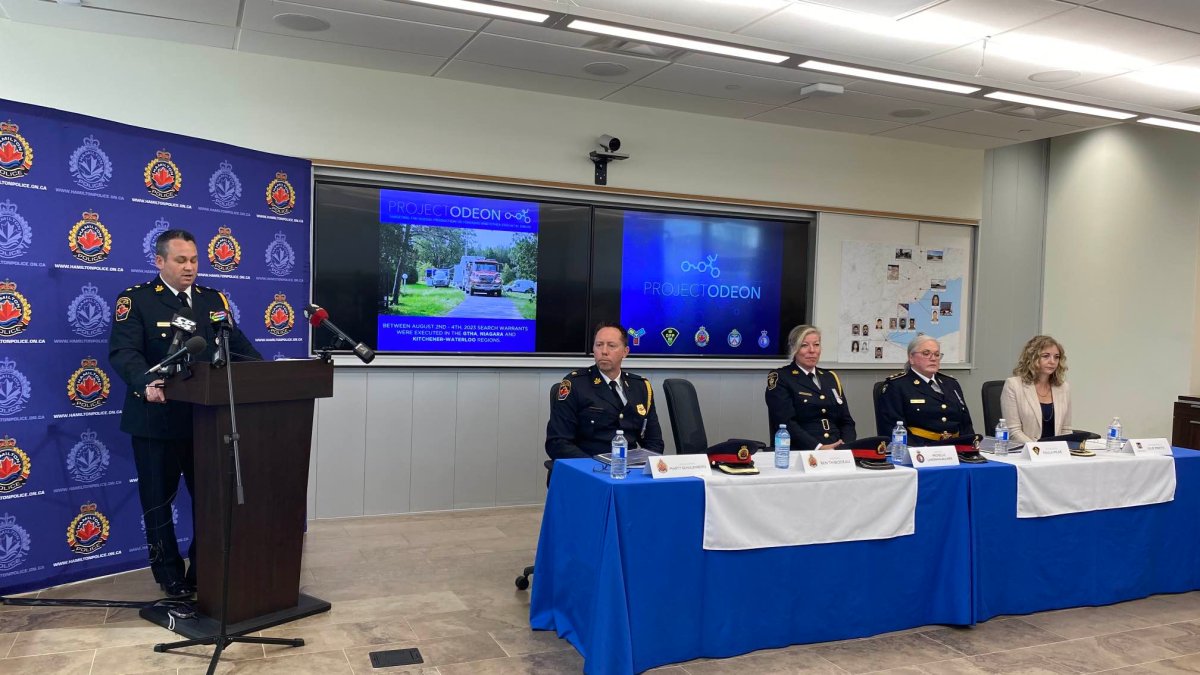Police say a 911 call tied to an overdose at a Hamilton, Ont., residence led to a two-year drug probe that shut down three super clandestine multi-million dollar illegal labs across the Toronto area.

Investigators say officers discovered the large-scale manufacturing facility in November 2021 after paramedics treated an individual suffering from toxic exposure to the chemicals on the Mountain.
“Based on the lab equipment and chemicals present at the residence, it was determined that the clandestine operation had the potential of producing up to 63 kilograms of fentanyl at the time,” inspector Ben Thibodeau revealed.
“As the investigation progressed, based on the staggering amount of waste discovered, it became clear that the manufacturing process had been in operation for an extended period of time.”
Close to 64.1 kilograms of illicit drugs, including fentanyl, methamphetamine, ketamine and cocaine, were confiscated during a two-year joint investigation that had connections between Hamilton and a number of GTA locations.
The joint investigation “Project Odeon” included OPP, York Regional Police, Toronto Police Service and several other law enforcement agencies dismantling what’s being characterized as “a significant producer of fentanyl” and other synthetic drugs in the Greater Hamilton and Toronto Area.
Hamilton police Supt. Martin Schulenberg revealed two overdose deaths over a few days were the catalyst for the probe, including the discovery of a deceased individual at a Toronto condo.
Schulenberg said the “purity of the drugs” seized put the estimated value of the substances around $4 million.
“This figure is subject to many factors, including the degree to which the purity of drug seized is able to be blended or cut with other substances and is able to then make it available for street level consumption,” he said.
Thibodeau said the origin of the lab equipment involved came from a company in the United States that sold items to an Oshawa-based company.
Movement of the pieces unveiled an extensive drug network leading coordinated raids on Aug. 2 at fentanyl labs in Hamilton, Smithville and Whitchurch-Stouffville.
Seizures also took place at a storage unit in Stouffville containing about 3.5 tons of chemical byproduct tied to fentanyl production as well as a storage unit in Toronto used to store 800 gallons of chemical precursors.
Close to 64.1 kilograms of illicit drugs, including fentanyl, methamphetamine, ketamine and cocaine were confiscated along with a firearm, ammunition, and $350,000 in cars, jewelry, designer clothing plus Canadian and U.S. currency.

Twelve people, identified in an HPS release, are facing a combined 48 criminal charges related to the possession and production of prohibited substances, proceeds of crime, firearm possession and conspiracy to commit an indictable offence.
Eight are Hamilton residents, two from Smithville, one from Welland and a 31-year-old physician from Toronto.
The youngest of the accused is 20 while the oldest is 59 years old, say police.
Thibodeau called the involvement of the physician as an “ethical impact” suggesting she treats patients and then by contrast aids in the distribution of a “damaging drug.”
“So the contrast is part of it … she is practicing to try to save lives to some extent, and in a different life … she is involved in the structure of distributing fentanyl.”
He says the product the labs were able to produce was likely not just destined for the Hamilton market, but “at least the entire province, if not beyond the province.”




Comments